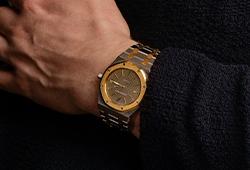Lucio Fontana
”Concetto Spaziale Taglio”
Signed verso L. Fontana and numbered 44/75. Porcelain executed in 1968. Also marked on the back "ars porcellana - rosenthal relief reihe" and "by courtesy of Marlborough - New York - London - Roma". 42 x 26 cm.
Kirjallisuus
Harry Ruhé and Camillo Rigo, Lucio Fontana. Graphics, Multiples and more.., 2006, C-3, p. 145.
Muut tiedot
Until the 1940s, Fontana lived and worked in Italy and France, but at the outbreak of the Second World War he traveled to Argentina. In Buenos Aires, at the Academia of Altamira, his ideas about Spazialismo, the artistic movement that Fontana founded and which was to play a very important role in his subsequent artistic career, were born. In his 1946 manifesto, Manifesto Blanco, he urged artists and like-minded people to move away from the traditional and academic in art and dare to include new technologies and science to create a fourth dimension.
A big part of Fontana's appeal was his ability to merge sculpture and painting. His choice of forms was inconsistent throughout his career, from geometric perfection to more elusive shapes. It was not about the cuts or punctures themselves, but about the process of getting there. Fontana's work was a product of its time, regardless of his choice of medium or technique.
As early as 1947, Fontana began working on the concept of Concetto Spaziale. A few years later came his Pietre, in which he fused painting and sculpture by applying thick layers of paint to the canvas and then overlaying a collage of colored glass pieces. A period of Buchi followed shortly afterwards, a perforation with holes in the paper or canvas to break up the two-dimensional and to seek the space behind the painting.


























